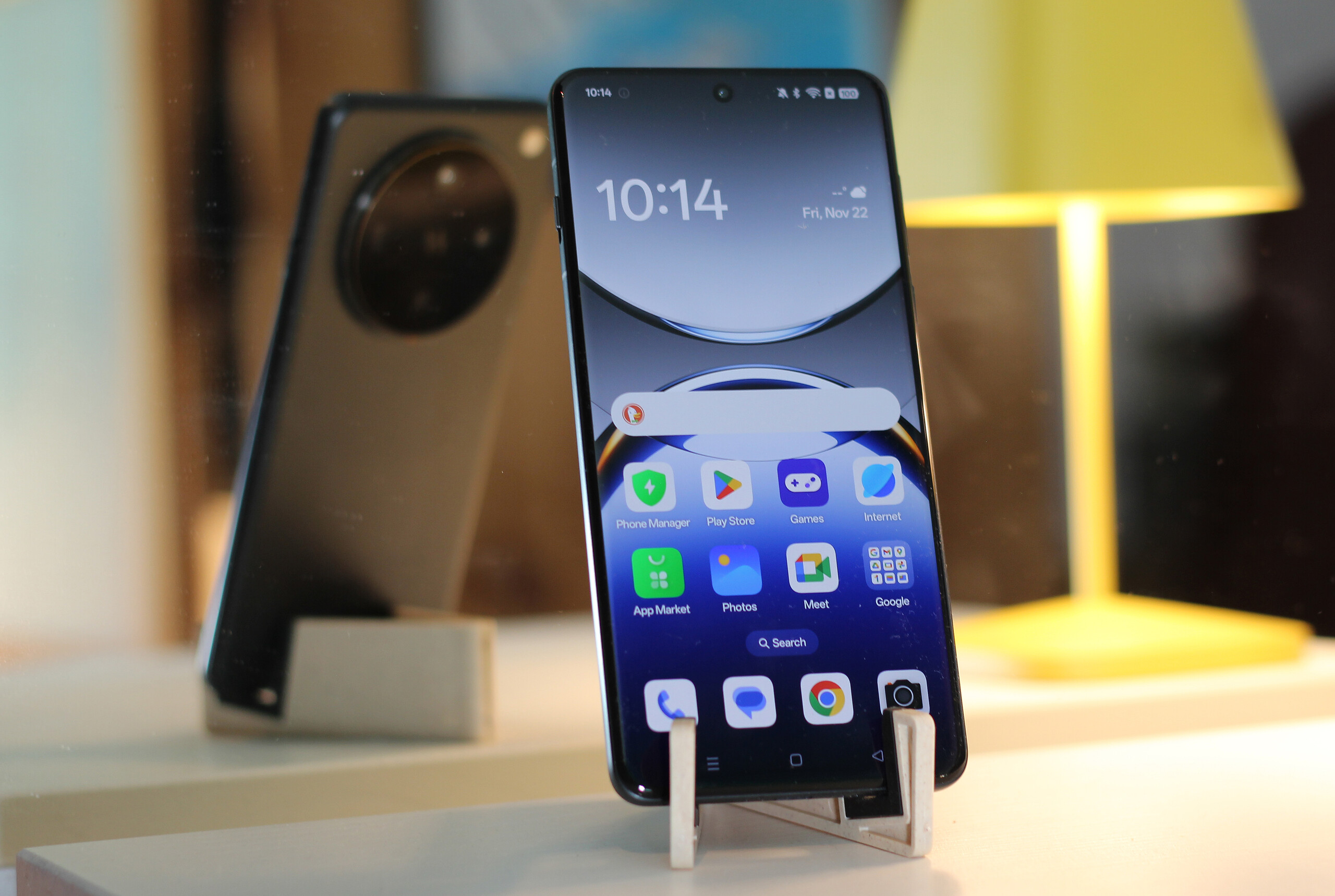
Oppo Find X8 Pro smartphone review - Attack on the iPhone with innovative battery technology
What the others can do, we have been able to do for a long time.
The Find X series is also making a comeback in Europe: with a Hasselblad camera, high-end SoC from MediaTek, bright OLED display and long battery life, the Find X8 Pro has everything it needs in the top segment. But is it enough to challenge the big players?Florian Schmitt, 👁 Florian Schmitt, ✓ Brian Burriston (translated by DeepL / Ninh Duy) Published 🇩🇪 🇫🇷 ...
Verdict
The Oppo Find X8 Pro looks stylish, is slim and high-quality and doesn't have to hide from other high-end smartphones. However, our test device doesn't want to do this at all; instead, it confidently attacks the big players with its bright and very color-accurate AMOLED screen, generous memory, haptic camera button and a good 6-year update promise.
It has hardly any real weaknesses and can even overtake some of the more established manufacturers with its fast charging technology, both wired and wireless. The quality of the cameras is also very impressive with two zoom lenses and a dedicated portrait lens.
If you compare the MediaTek Dimensity 9400 in the Oppo smartphone to the Qualcomm Snapdragon 8 Elite which is likely to power many top phones of the next generation, it becomes clear that our test is significantly slower. Also compared to Apple's A18 Pro the SoC of the Oppo Find X8 Pro loses out. Nevertheless, the performance is more than sufficient for everyday use and you won't notice any difference in the vast majority of apps.
The silicone-carbon battery is a great innovation that can deliver a lot of energy with a low weight and thus enables very good runtimes.
Overall, the Oppo Find X8 Pro, with its flexible camera system, strong endurance and high performance, is definitely a competitor to Apple, Samsung and co.
Pros
Cons
Price and availability
The Oppo Find X8 Pro is already available in some European countries. The price for the phone with 16 GB RAM and 512 GB mass storage is officially 1,199 Euros (~$1263).
The phone will not be available in Germany until 2025, but you can currently have it shipped to Germany via the Dutch Oppo store, for example and currently even get a 50 Euro (~$53) discount.
Possible competitors in comparison
Image | Model / Review | Price | Weight | Drive | Display |
|---|---|---|---|---|---|
| Oppo Find X8 Pro Mediatek Dimensity 9400 ⎘ ARM Immortalis-G925 MC12 ⎘ 16 GB Memory, 512 GB | Amazon: 1. $1,349.00 OPPO Find X8 Pro Dual-SIM 51... 2. $14.39 AKABEILA [3 Pack Privacy Scr... 3. $13.28 YOUULAR [2 Pack Privacy Scre... List Price: 1199€ | 215 g | 512 GB UFS 4.0 Flash | 6.78" 2780x1264 450 PPI AMOLED | |
| Google Pixel 9 Pro XL Google Tensor G4 ⎘ ARM Mali-G715 MP7 ⎘ 16 GB Memory, 256 GB | Amazon: 1. $749.00 Google Pixel 9 Pro XL - Unlo... 2. $824.04 Google Pixel 9 Pro XL - Unlo... 3. $9.99 OMOTON 3+2 Pack for Google P... List Price: 1299€ | 221 g | 256 GB UFS 3.1 Flash | 6.80" 2992x1344 482 PPI OLED | |
| OnePlus 12 Qualcomm Snapdragon 8 Gen 3 ⎘ Qualcomm Adreno 750 ⎘ 16 GB Memory, 512 GB | Amazon: List Price: 979 EUR | 220 g | 512 GB UFS 4.0 Flash | 6.82" 3168x1440 510 PPI AMOLED | |
| Apple iPhone 16 Pro Max Apple A18 Pro ⎘ Apple A18 Pro GPU ⎘ 8 GB Memory, 256 GB NVMe | Amazon: 1. $37.99 Apple iPhone 16 Pro Max Sili... 2. $34.99 Apple iPhone 16 Pro Max Sili... 3. $7.99 Ailun 3 Pack Screen Protecto... List Price: 1449€ | 227 g | 256 GB NVMe | 6.90" 2868x1320 458 PPI Super Retina XDR OLED | |
| Samsung Galaxy S24 Ultra Qualcomm Snapdragon 8 Gen 3 for Galaxy ⎘ Qualcomm Adreno 750 ⎘ 12 GB Memory, 256 GB | Amazon: $1,299.99 List Price: 1449€ | 232 g | 256 GB UFS 4.0 Flash | 6.80" 3120x1440 505 PPI Dynamic AMOLED 2X |
Table of Contents
- Verdict
- Specifications
- Case - Elegant chassis with a slight weakness in feel
- Features - Lots of memory on board
- Software - Up to six years of updates
- Communication and GNSS - Fast WLAN with weaknesses when transmitting
- Phone functions and voice quality - Occasionally a little muffled
- Cameras - Four cameras as a dream team
- Accessories and warranty - Delivered without charger
- Input devices & operation - Quick to operate
- Display - Bright and true to color
- Performance - The new SoC convinces
- Games - 120 fps is not just a dream
- Emissions - Significant throttling noticeable
- Battery life - Fast charging and long runtimes
- Notebookcheck overall rating
Oppo has been a little quiet in Europe in recent years, as there have been many challenges for the manufacturer: a clear separation of the brands and the dissolution of the parent company were on the agenda, and the company also had to deal with a patent lawsuit in Germany.
Now, however, the manufacturer is back in full force and wants to prove it with the Oppo Find X8 Pro: A high-end smartphone with the best that the shelves of camera sensor manufacturers, SoC producers and chip suppliers have to offer. The model is already available in China, where it costs around 890 Euros (~$938). It will be more expensive in the West, but the price of the phone is in line with other flagship phones.
Another challenger is certainly good for the cell phone market in Europe and so we are looking forward to the test results of the Oppo smartphone. Are you too? Well, let's get started right away.
Specifications
Case - Elegant chassis with a slight weakness in feel
The chassis of the Oppo Find X8 Pro is made of glass and aluminum, with a matte dark grey surface or a pearlescent white surface on the back. The blue version from China did not make it to Europe. The aluminum frame matches the color and is also matte. At the top center, the circular camera module stands out from the rest of the housing and is surrounded by a ribbed metal frame.
The look and feel are very high-quality and the classic color scheme allows the smartphone to blend in well with any environment. The glass on the front is rounded towards the corners, although this is much more discreet than on previous models, making accidental touches on the side unlikely. Narrow and symmetrical edges around the display on all sides give the smartphone a modern look.
The workmanship of the Oppo Find X8 Pro is of a very high standard, the device looks robust and feels good in the hand. Only slightly noticeable edges at the transition between the glass and frame as well as a slight creaking when twisted diminish the impression of quality somewhat.
The device has IP68/69 protection class certification, which means it can be taken on a (not too deep) dive in fresh water, it can also be used in dusty environments and is even protected against high-pressure water jets.
At 215 grams (~7.6 oz), the Oppo Find X8 Pro is a fairly lightweight high-end smartphone. In terms of dimensions, it is quite slim at 8.2 millimetres (~0.32 in) thick, but also offers a slightly smaller screen than many other top phones.
Features - Lots of memory on board
In Europe, the Oppo flagship will be released in the large memory version with 16 GB RAM and 512 GB mass storage. At 1,199 Euros (~$1263) the price shows the manufacturer has confidence it can compete at a high level. In view of the memory configuration, this is still significantly below the recommended prices for Apple's or Samsung's top models, while at the same time phones such as the OnePlus 12 or an Honor Magic6 Pro are now available for significantly less. The Oppo Find X8 Pro is therefore not currently a bargain. The first deals have already appeared before the official release of the smartphone in Europe.
Internationally, there are also other storage variants, such as with 12 GB RAM and 256 GB mass storage or with 16 GB RAM and 1 TB for data. Also available internationally, but not in Europe, is a variant with satellite communication for emergencies.
For the USB port, Oppo relies on USB 3.2 Gen.1 with up to 5 GBit/s data throughput. It is also possible to output an image signal so that external monitors can be connected via cable. Image transmission is also possible wirelessly via Miracast, although not all monitors support this.
Two nano-SIM slots are available, as is the option of storing an eSIM profile. However, only 2 SIM cards can be used at the same time. There is no microSD reader, but there is an infrared sensor that can be used to operate televisions, for example.
Software - Up to six years of updates
ColorOS 15 is based on Android 15 and shows changes to the standard Android in many areas, whereby the system has a high-quality look and feel and reacts very quickly. In some areas, ColorOS is reminiscent of Apple's iOS in terms of design.
AI is of course an important topic, but users should also be aware of the use of AI immediately, so that this is marked by a colored frame around the display. Thanks to the smart assistants, older images can be scaled up in the Photos app, for example, or texts can be summarized in the Notes app.
The manufacturer promises five OS updates for its phone and security patches until 2030, i.e. for six years.
Sustainability
In terms of sustainability, Oppo offers its customers the opportunity to use the phone for quite a long time thanks to a decent support period for the software.
The smartphone's packaging is plastic-free and is printed with inks based on soybean oil. According to Oppo's sustainability report, 45% of the fibers used for the packaging are already made from recycled materials. However, there is also a dazzling special print on the packaging, although it is not clear whether it was produced using environmentally friendly methods.
For the device itself, there are so far only declarations of intent and no proven use of recycled materials. There is also no focus on reparability by the user and it is almost impossible to check. At ifixit.com there are very few repair guides for only selected models.
Overall, Oppo still has some catching up to do in this area compared to Apple or providers specializing in sustainability such as Fairphone.
Communication and GNSS - Fast WLAN with weaknesses when transmitting
The SoC's Wi-Fi modem also supports the latest Wi-Fi standard, Wi-Fi 7, which we unfortunately cannot test yet because the corresponding routers (especially with a 10 Gbit LAN port) are not yet integrated into our test procedure. In the 6 GHz band, i.e. with WiFi 6E, the Oppo Find X8 Pro is quite fast in terms of reception: We measured an average of 1,610 MBit/s with our reference router Asus ROG Rapture AXE11000.
When sending data, however, the Oppo smartphone falls behind other high-end devices; even when repeating the test several times, we were unable to get more than around 650 Mbps. The Find X8 Pro can still make good use of a gigabit internal line. When it comes to even faster internal networks, there are even faster smartphones on the market.
To access the mobile network, numerous frequencies are supported in both the 4G and 5G networks. This means that the Find X8 Pro can also be taken to foreign countries and should provide access to the mobile internet. Some frequency bands are missing compared to the iPhone 16 Pro Max but this should hardly play a role in everyday life.
The reception is at a high level, as we know from random tests during our test period. Our test device also performs well compared to other high-end phones and does not completely lose the network even in difficult situations, such as between tall buildings.
We also check the Oppo Find X8 Pro's location system. To do this, we first go outside and are quickly located with an accuracy of 3 meters (~10 feet). However, even higher accuracy would theoretically be possible, as the phone also supports SBAS for even more precise positioning.
Our practical test on the subject of positioning consists of a round through the city, which we do by car as an exception due to the wintry conditions. The Oppo Find X8 Pro has to prove itself in a direct comparison against the Garmin Venu 2, a smartwatch with particularly precise positioning.
And it does its job very well: there are only a few places where it deviates slightly from the actual route and when crossing a bridge, the outward journey appears to take place in water, but otherwise the phone is accurate enough to be used for tracking in everyday life.
Phone functions and voice quality - Occasionally a little muffled
ColorOS uses Google's phone app by default, but phone apps from other providers can also be easily installed and set as the default.
The voice quality via the internal earpiece is decent, although the person we are talking to sounds a little muffled from time to time. The microphone records our voice clearly, but tends to distort with loud voices.
The speaker and hands-free microphone pick up the other person's voice with significantly less bass, making it sound a little thinner. However, the other person's voice is still clear and easy to understand. What we say is recorded well, even if we don't speak very loudly.
Cameras - Four cameras as a dream team
There are four 50-megapixel lenses at the back, from the ultra-wide-angle lens to the main camera and two periscope telephoto lenses, each with a different focal length and therefore a wide range of image composition options.
Our zoom series shows that even a 100x zoom from the hand still produces quite good results in daylight and the image still looks very sharp with a 50x zoom. This makes the Oppo Find X8 Pro one of the most powerful zoom smartphones currently available on the market.
Images from the main camera also look high-quality, although the artificial bokeh in the background of the plant image is a little too strong. In the focus area, the image is precise and rich in detail. The high dynamic range in the ambient image causes problems for both the Oppo camera and the comparison phones, as the shiny hands of the church clock always over-glow. Overall, the Oppo phone creates a good image with realistic color reproduction. Even in low light, many structures still look very sharp.
The wide-angle camera works cleanly and even shows the surroundings in more detail than some other high-end phones.
There is a 32 megapixel camera on the front, which takes great selfies and also has no problems with bright backgrounds and less well-lit faces.
Image comparison
Choose a scene and navigate within the first image. One click changes the position on touchscreens. One click on the zoomed-in image opens the original in a new window. The first image shows the scaled photograph of the test device.
Main camera PlantMain camera EnvironmentMain camera Low LightWide Angle cameraThe main camera has to show what it can do in the lab. There are slight problems with the contrast, but overall the display looks very sharp. At only 1 lux, our test chart looks rough, but the content is still clearly recognizable.
The color display is also quite realistic, as the phone proves in the comparison photos of the color chart.
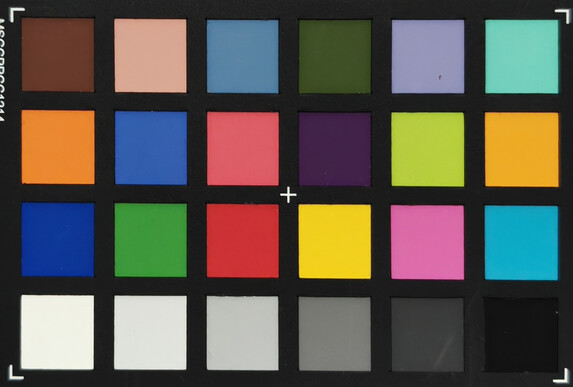
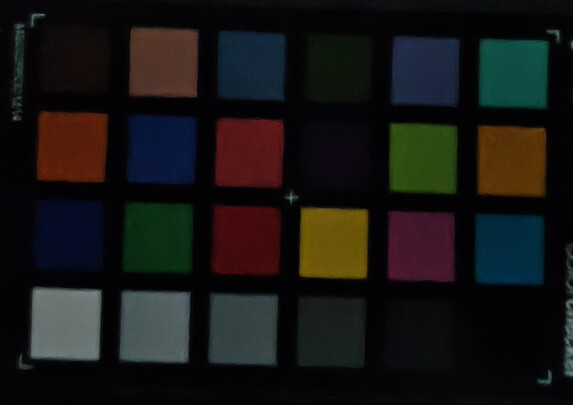
Accessories and warranty - Delivered without charger
The Oppo Find X8 Pro does not come with a charger, only a charging cable and a SIM tool. A suitable charger costs around 40 Euros (~$42) in the company's online store and is available for less at amazon.de from 27 Euros (~$28).
The manufacturer offers a warranty of 24 months for smartphones purchased in Europe.
Input devices & operation - Quick to operate
The touchscreen of the Oppo Find X8 Pro is scanned for touches up to 240 times per second. It can be operated very smoothly and reliably and is also sensitive at the edges and in the corners.
There is also a mode that makes the touchscreen even more responsive, making it easier to use with gloves. In addition, the speed of the animations can be set faster so that the system reacts even more directly.
As a special feature, the Oppo Find X8 Pro also has two physical buttons on the casing, which are located next to the volume rocker and the standby button: an alert slider, which enables the selection of vibration, ringtone or mute for notifications.
Oppo has also installed a haptic camera button, which is strikingly reminiscent of Apple's new camera button on the iPhone 16 series. It also works identically: the camera mode can be activated by pressing it twice, even from standby. You can zoom in by sliding your finger and take a photo by pressing it once. This works well and is a nice addition for photo fans.
The fingerprint sensor is located behind the screen and quite far down on the device. This makes it somewhat difficult to reach if you only hold the phone in one hand. When setting up the fingerprint, you should definitely make sure that you also register a touch that is a little higher up. Overall, however, the sensor works very reliably and unlocks the device without any waiting time.
Unlocking via facial recognition is also possible, but this is only carried out in two dimensions via the front camera without additional sensors. This method is therefore somewhat more susceptible to manipulation and cannot be used as verification for some security measures.
Display - Bright and true to color
The AMOLED screen of the Oppo Find X8 Pro achieves a very fine display with 2,780 x 1,264 pixels and a size of 6.8 inches.
The maximum brightness in everyday use is around 1,160 cd/m², but up to 4,500 cd/m² is possible on small surfaces in HDR mode.
We measured PWM flickering at very low brightness levels, but with a frequency adapted to the frame rate. Nevertheless, sensitive people should try out the screen before finally buying the phone to see if symptoms such as headaches or strained eyes occur.
| |||||||||||||||||||||||||
Brightness Distribution: 98 %
Center on Battery: 1167 cd/m²
Contrast: ∞:1 (Black: 0 cd/m²)
ΔE ColorChecker Calman: 0.87 | ∀{0.5-29.43 Ø4.78}
ΔE Greyscale Calman: 1.4 | ∀{0.09-98 Ø5}
99.7% sRGB (Calman 2D)
Gamma: 2.311
CCT: 6426 K
| Oppo Find X8 Pro AMOLED, 2780x1264, 6.8" | Google Pixel 9 Pro XL OLED, 2992x1344, 6.8" | OnePlus 12 AMOLED, 3168x1440, 6.8" | Apple iPhone 16 Pro Max Super Retina XDR OLED, 2868x1320, 6.9" | Samsung Galaxy S24 Ultra Dynamic AMOLED 2X, 3120x1440, 6.8" | |
|---|---|---|---|---|---|
| Screen | 42% | -41% | -58% | -95% | |
| Brightness middle (cd/m²) | 1167 | 2148 84% | 1026 -12% | 1055 -10% | 1317 13% |
| Brightness (cd/m²) | 1160 | 2050 77% | 991 -15% | 1061 -9% | 1365 18% |
| Brightness Distribution (%) | 98 | 86 -12% | 91 -7% | 93 -5% | 94 -4% |
| Black Level * (cd/m²) | |||||
| Colorchecker dE 2000 * | 0.87 | 0.5 43% | 1.19 -37% | 1.5 -72% | 3.4 -291% |
| Colorchecker dE 2000 max. * | 1.64 | 1.4 15% | 3.3 -101% | 4.7 -187% | 5 -205% |
| Greyscale dE 2000 * | 1.4 | 0.8 43% | 2.4 -71% | 2.3 -64% | 2.8 -100% |
| Gamma | 2.311 95% | 2.23 99% | 2.24 98% | 2.21 100% | 2 110% |
| CCT | 6426 101% | 6582 99% | 6920 94% | 6625 98% | 6458 101% |
| Color Space (Percent of sRGB) (%) | 99.5 |
* ... smaller is better
Screen Flickering / PWM (Pulse-Width Modulation)
| Screen flickering / PWM detected | 86 Hz Amplitude: 19 % | ||
The display backlight flickers at 86 Hz (worst case, e.g., utilizing PWM) . The frequency of 86 Hz is very low, so the flickering may cause eyestrain and headaches after extended use. In comparison: 53 % of all tested devices do not use PWM to dim the display. If PWM was detected, an average of 8118 (minimum: 5 - maximum: 343500) Hz was measured. | |||
Measurement series with fixed zoom level and different brightness settings
In our measurements with the spectrophotometer and the CalMAN software, it is noticeable that the screen can achieve a very accurate color representation in "Pro" mode. A deviation of the color tones and grey levels is no longer visible to the naked eye and is hardly measurable for many color values. This also allows the professional evaluation of colors on the screen.
Display Response Times
| ↔ Response Time Black to White | ||
|---|---|---|
| 0.9 ms ... rise ↗ and fall ↘ combined | ↗ 0.4 ms rise | |
| ↘ 0.5 ms fall | ||
| The screen shows very fast response rates in our tests and should be very well suited for fast-paced gaming. In comparison, all tested devices range from 0.1 (minimum) to 240 (maximum) ms. » 2 % of all devices are better. This means that the measured response time is better than the average of all tested devices (20.2 ms). | ||
| ↔ Response Time 50% Grey to 80% Grey | ||
| 1.7 ms ... rise ↗ and fall ↘ combined | ↗ 0.8 ms rise | |
| ↘ 0.9 ms fall | ||
| The screen shows very fast response rates in our tests and should be very well suited for fast-paced gaming. In comparison, all tested devices range from 0.165 (minimum) to 636 (maximum) ms. » 7 % of all devices are better. This means that the measured response time is better than the average of all tested devices (31.6 ms). | ||
Thanks to the high brightness, the display can also be used well outdoors, whereby spending time in a shady environment significantly reduces the reflections on the screen and makes it even more pleasant to read.
The image is still very easy to see even from flat viewing angles, as there is no visible shift in color or brightness values.
Performance - The new SoC convinces
The MediaTek Dimensity 9400 is a fairly new SoC with which MediaTek wants to secure its place in the high-end segment. The Oppo Find X8 Pro comes with the chip, which enables processor clock rates of up to 3.62 GHz.
Our benchmarks show that it is not quite enough for a top position: although a superiority over this year's top smartphones is definitely visible, the Oppo flagship does not come close to the iPhone 16 Pro Max in terms of processor performance. In addition, the Qualcomm Snapdragon 8 Elite casts its shadow ahead, with which many of next year's flagships will probably be equipped. We have already been able to test the reference design and, thanks to specially designed CPU units, it is even more powerful.
However, it is questionable whether the performance difference will be noticeable in everyday use, as the power of the MediaTek Dimensity 9400 in the Oppo Find X8 Pro is enough to run the vast majority of apps smoothly and with short loading times. You will only notice a difference with very complex tasks such as video editing with many clips.
| UL Procyon AI Inference for Android - Overall Score NNAPI | |
| Average Mediatek Dimensity 9400 (75143 - 81594, n=3) | |
| Oppo Find X8 Pro | |
| Google Pixel 9 Pro XL | |
| Average of class Smartphone (3769 - 81594, n=137, last 2 years) | |
| Samsung Galaxy S24 Ultra | |
| OnePlus 12 | |
| Geekbench AI | |
| Single Precision TensorFlow NNAPI 1.1 | |
| Average Mediatek Dimensity 9400 (1368 - 1543, n=2) | |
| Oppo Find X8 Pro | |
| Average of class Smartphone (122 - 4122, n=40, last 2 years) | |
| OnePlus 12 | |
| Google Pixel 9 Pro XL | |
| Half Precision TensorFlow NNAPI 1.1 | |
| Average Mediatek Dimensity 9400 (9283 - 9476, n=2) | |
| Oppo Find X8 Pro | |
| Google Pixel 9 Pro XL | |
| Average of class Smartphone (122 - 32120, n=40, last 2 years) | |
| OnePlus 12 | |
| Quantized TensorFlow NNAPI 1.1 | |
| Average Mediatek Dimensity 9400 (12709 - 13068, n=2) | |
| Oppo Find X8 Pro | |
| Google Pixel 9 Pro XL | |
| Average of class Smartphone (118 - 44381, n=40, last 2 years) | |
| OnePlus 12 | |
The ARM Immortalis-G925 with 12 cores is used as the graphics chip in the SoC. It offers a lot of performance and can also partly replace the Apple A18 Pro GPU in graphics calculations. Devices with the Snapdragon 8 Elite will offer significantly more graphics power, as our tests of the reference device show.
Nevertheless, according to the benchmarks, even complex games in 4K resolution should run at around 40 fps on the Oppo smartphone, so there is hardly any reason to demand even more graphics power.
GFXBench (DX / GLBenchmark) 2.7: T-Rex Onscreen | 1920x1080 T-Rex Offscreen
GFXBench 3.0: on screen Manhattan Onscreen OGL | 1920x1080 1080p Manhattan Offscreen
GFXBench 3.1: on screen Manhattan ES 3.1 Onscreen | 1920x1080 Manhattan ES 3.1 Offscreen
GFXBench: on screen Car Chase Onscreen | 1920x1080 Car Chase Offscreen | on screen Aztec Ruins High Tier Onscreen | 2560x1440 Aztec Ruins High Tier Offscreen | on screen Aztec Ruins Normal Tier Onscreen | 1920x1080 Aztec Ruins Normal Tier Offscreen | 3840x2160 4K Aztec Ruins High Tier Offscreen
| 3DMark / Wild Life Extreme Unlimited | |
| Oppo Find X8 Pro | |
| Samsung Galaxy S24 Ultra | |
| Apple iPhone 16 Pro Max | |
| OnePlus 12 | |
| Google Pixel 9 Pro XL | |
| 3DMark / Wild Life Extreme | |
| Oppo Find X8 Pro | |
| Samsung Galaxy S24 Ultra | |
| Apple iPhone 16 Pro Max | |
| OnePlus 12 | |
| Google Pixel 9 Pro XL | |
| 3DMark / Solar Bay Score | |
| Oppo Find X8 Pro | |
| OnePlus 12 | |
| Apple iPhone 16 Pro Max | |
| Samsung Galaxy S24 Ultra | |
| 3DMark / Solar Bay Unlimited Score | |
| Oppo Find X8 Pro | |
| Samsung Galaxy S24 Ultra | |
| Apple iPhone 16 Pro Max | |
| OnePlus 12 | |
| 3DMark / Steel Nomad Light Unlimited Score | |
| Oppo Find X8 Pro | |
| Apple iPhone 16 Pro Max | |
| Samsung Galaxy S24 Ultra | |
| OnePlus 12 | |
| Google Pixel 9 Pro XL | |
| 3DMark / Steel Nomad Light Score | |
| Apple iPhone 16 Pro Max | |
| Oppo Find X8 Pro | |
| Samsung Galaxy S24 Ultra | |
| OnePlus 12 | |
| Google Pixel 9 Pro XL | |
| GFXBench (DX / GLBenchmark) 2.7 / T-Rex Onscreen | |
| Samsung Galaxy S24 Ultra | |
| Google Pixel 9 Pro XL | |
| OnePlus 12 | |
| Apple iPhone 16 Pro Max | |
| Oppo Find X8 Pro | |
| GFXBench (DX / GLBenchmark) 2.7 / T-Rex Offscreen | |
| Oppo Find X8 Pro | |
| Samsung Galaxy S24 Ultra | |
| OnePlus 12 | |
| Apple iPhone 16 Pro Max | |
| Google Pixel 9 Pro XL | |
| GFXBench 3.0 / Manhattan Onscreen OGL | |
| Samsung Galaxy S24 Ultra | |
| Google Pixel 9 Pro XL | |
| Oppo Find X8 Pro | |
| OnePlus 12 | |
| Apple iPhone 16 Pro Max | |
| GFXBench 3.0 / 1080p Manhattan Offscreen | |
| Oppo Find X8 Pro | |
| Samsung Galaxy S24 Ultra | |
| Apple iPhone 16 Pro Max | |
| OnePlus 12 | |
| Google Pixel 9 Pro XL | |
| GFXBench 3.1 / Manhattan ES 3.1 Onscreen | |
| Samsung Galaxy S24 Ultra | |
| Google Pixel 9 Pro XL | |
| OnePlus 12 | |
| Apple iPhone 16 Pro Max | |
| Oppo Find X8 Pro | |
| GFXBench 3.1 / Manhattan ES 3.1 Offscreen | |
| Oppo Find X8 Pro | |
| Samsung Galaxy S24 Ultra | |
| OnePlus 12 | |
| Apple iPhone 16 Pro Max | |
| Google Pixel 9 Pro XL | |
| GFXBench / Car Chase Onscreen | |
| Samsung Galaxy S24 Ultra | |
| OnePlus 12 | |
| Apple iPhone 16 Pro Max | |
| Oppo Find X8 Pro | |
| Google Pixel 9 Pro XL | |
| GFXBench / Car Chase Offscreen | |
| Oppo Find X8 Pro | |
| OnePlus 12 | |
| Apple iPhone 16 Pro Max | |
| Samsung Galaxy S24 Ultra | |
| Google Pixel 9 Pro XL | |
| GFXBench / Aztec Ruins High Tier Onscreen | |
| Samsung Galaxy S24 Ultra | |
| OnePlus 12 | |
| Apple iPhone 16 Pro Max | |
| Oppo Find X8 Pro | |
| Google Pixel 9 Pro XL | |
| GFXBench / Aztec Ruins High Tier Offscreen | |
| Oppo Find X8 Pro | |
| OnePlus 12 | |
| Samsung Galaxy S24 Ultra | |
| Apple iPhone 16 Pro Max | |
| Google Pixel 9 Pro XL | |
| GFXBench / Aztec Ruins Normal Tier Onscreen | |
| Samsung Galaxy S24 Ultra | |
| Google Pixel 9 Pro XL | |
| OnePlus 12 | |
| Apple iPhone 16 Pro Max | |
| Oppo Find X8 Pro | |
| GFXBench / Aztec Ruins Normal Tier Offscreen | |
| Oppo Find X8 Pro | |
| OnePlus 12 | |
| Samsung Galaxy S24 Ultra | |
| Apple iPhone 16 Pro Max | |
| Google Pixel 9 Pro XL | |
| GFXBench / 4K Aztec Ruins High Tier Offscreen | |
| Oppo Find X8 Pro | |
| Samsung Galaxy S24 Ultra | |
| OnePlus 12 | |
| Apple iPhone 16 Pro Max | |
| Google Pixel 9 Pro XL | |
When surfing the Internet, the Oppo Find X8 Pro is only moderately fast for a high-end phone in the benchmarks. Hardly anyone can compete with the surfing speed of the iPhone anyway, but other Android devices are also significantly faster in some benchmarks.
In everyday use, even very complex websites load quickly and images are usually available while scrolling, so the performance of the Oppo phone is completely sufficient here too.
| Jetstream 2 - 2.0 Total Score | |
| Apple iPhone 16 Pro Max (Safari Mobile 18.0.1) | |
| Oppo Find X8 Pro (Chrome 131) | |
| OnePlus 12 (Chrome 126) | |
| Samsung Galaxy S24 Ultra (Chrome 121) | |
| Average Mediatek Dimensity 9400 (167.1 - 234, n=3) | |
| Google Pixel 9 Pro XL (Chrome 140) | |
| Average of class Smartphone (23.8 - 387, n=153, last 2 years) | |
| Speedometer 2.0 - Result 2.0 | |
| Apple iPhone 16 Pro Max (Safari Mobile 18.0.1) | |
| Google Pixel 9 Pro XL (Chrome 140) | |
| OnePlus 12 (Chrome 126) | |
| Average Mediatek Dimensity 9400 (269 - 271, n=2) | |
| Oppo Find X8 Pro (Chrome 131) | |
| Samsung Galaxy S24 Ultra (Chrome 121) | |
| Average of class Smartphone (15.2 - 643, n=128, last 2 years) | |
| Speedometer 3 - Score 3.0 | |
| Apple iPhone 16 Pro Max (Safari Mobile 18.0.1) | |
| Google Pixel 9 Pro XL (Chrome 140) | |
| Oppo Find X8 Pro (Chrome 131) | |
| Average Mediatek Dimensity 9400 (15 - 17.7, n=3) | |
| OnePlus 12 (Chrome 126) | |
| Average of class Smartphone (1.03 - 42.8, n=125, last 2 years) | |
| WebXPRT 4 - Overall | |
| Apple iPhone 16 Pro Max (Safari Mobile 18.0.1) | |
| OnePlus 12 (Chrome 126) | |
| Samsung Galaxy S24 Ultra (Chrome 121) | |
| Average Mediatek Dimensity 9400 (147 - 225, n=3) | |
| Google Pixel 9 Pro XL (Chrome 140) | |
| Average of class Smartphone (27 - 306, n=147, last 2 years) | |
| Oppo Find X8 Pro (Chrome 131) | |
| Octane V2 - Total Score | |
| Apple iPhone 16 Pro Max (Safari Mobile 18.0.1) | |
| Average Mediatek Dimensity 9400 (56843 - 86943, n=4) | |
| Samsung Galaxy S24 Ultra (Chrome 121) | |
| OnePlus 12 (Chrome 126) | |
| Google Pixel 9 Pro XL (Chrome 129) | |
| Oppo Find X8 Pro (Chrome 131) | |
| Average of class Smartphone (2228 - 121337, n=200, last 2 years) | |
| Mozilla Kraken 1.1 - Total | |
| Average of class Smartphone (257 - 28190, n=155, last 2 years) | |
| Oppo Find X8 Pro (Chrome 131) | |
| OnePlus 12 (Chrome 126) | |
| Samsung Galaxy S24 Ultra (Chrome 121) | |
| Average Mediatek Dimensity 9400 (432 - 660, n=3) | |
| Google Pixel 9 Pro XL (Chrome 140) | |
| Apple iPhone 16 Pro Max (Safari Mobile 18.0.1) | |
* ... smaller is better
Thanks to UFS 4.0 storage, the Oppo smartphone does not have to hide in this discipline either, on the contrary: it is significantly faster than Google's Pixel 9 Pro XL and on a par with other high-quality Android phones.
| Oppo Find X8 Pro | Google Pixel 9 Pro XL | OnePlus 12 | Samsung Galaxy S24 Ultra | Average 512 GB UFS 4.0 Flash | Average of class Smartphone | |
|---|---|---|---|---|---|---|
| AndroBench 3-5 | 43% | 139% | 14% | 89% | 33% | |
| Sequential Read 256KB (MB/s) | 3482.9 | 1850.5 -47% | 3297.57 -5% | 3610.25 4% | 3675 ? 6% | 2223 ? -36% |
| Sequential Write 256KB (MB/s) | 3498.5 | 1280.56 -63% | 3246.21 -7% | 1893.63 -46% | 3072 ? -12% | 1838 ? -47% |
| Random Read 4KB (MB/s) | 375.7 | 310.88 -17% | 438.5 17% | 437.12 16% | 382 ? 2% | 295 ? -21% |
| Random Write 4KB (MB/s) | 100.4 | 398.27 297% | 652.8 550% | 181.55 81% | 463 ? 361% | 335 ? 234% |
Games - 120 fps is not just a dream
The Oppo Find X8 Pro is a very powerful gaming phone, as we discovered during our tests with some of the most popular mobile games.
The graphically demanding Genshin Impact, for example, runs at a smooth 60 fps, while PUBG Mobile even offers 120 Hz at very low settings for even smoother scrolling and better responsiveness. We test the frame rates with the software from GameBench.
Gaming via the screen is also very easy to use thanks to the precise touchscreen.
Emissions - Significant throttling noticeable
Temperature
Under prolonged load, the smartphone heats up to 47.1 °C (116.78 °F), which is clearly noticeable but not yet critical. However, we measure at room temperature, so the casing temperatures could be significantly higher on hot summer days.
The SoC's performance is also affected by the high temperatures: In our long-term benchmarks from 3DMark, there are sometimes performance drops of up to 45%.
(-) The maximum temperature on the upper side is 47.1 °C / 117 F, compared to the average of 35.2 °C / 95 F, ranging from 21.9 to 247 °C for the class Smartphone.
(±) The bottom heats up to a maximum of 43.1 °C / 110 F, compared to the average of 34 °C / 93 F
(+) In idle usage, the average temperature for the upper side is 23.1 °C / 74 F, compared to the device average of 32.9 °C / 91 F.
3DMark Steel Nomad Stress Test
| 3DMark | |
| Wild Life Stress Test Stability | |
| Apple iPhone 16 Pro Max | |
| Oppo Find X8 Pro | |
| OnePlus 12 | |
| Google Pixel 9 Pro XL | |
| Samsung Galaxy S24 Ultra | |
| Wild Life Extreme Stress Test | |
| OnePlus 12 | |
| Google Pixel 9 Pro XL | |
| Apple iPhone 16 Pro Max | |
| Oppo Find X8 Pro | |
| Samsung Galaxy S24 Ultra | |
| Solar Bay Stress Test Stability | |
| Apple iPhone 16 Pro Max | |
| Oppo Find X8 Pro | |
| Samsung Galaxy S24 Ultra | |
| Steel Nomad Light Stress Test Stability | |
| OnePlus 12 | |
| Google Pixel 9 Pro XL | |
| Samsung Galaxy S24 Ultra | |
| Apple iPhone 16 Pro Max | |
| Oppo Find X8 Pro | |
Speaker
The speaker on the bottom edge is supported by the earpiece as a second speaker. This also enables slight stereo effects. The Oppo Find X8 Pro's sound system can get quite loud overall and offers a good reproduction of medium frequencies. High tones do not sound too unpleasant overall, even at very high volumes, but still seem somewhat overemphasized. This is probably mainly due to the fact that bass is virtually inaudible.
For a high-end smartphone, the speaker system is well done and can reproduce music and movie sound appropriately. However, you can of course get even better sound via high-quality speakers or speakers that can be connected via Bluetooth or USB-C. Both work without any problems. The most important wireless audio codecs are available, but you will search in vain for more exotic codecs such as Opus or LC3.
Oppo Find X8 Pro audio analysis
(+) | speakers can play relatively loud (87.8 dB)
Bass 100 - 315 Hz
(-) | nearly no bass - on average 17.9% lower than median
(±) | linearity of bass is average (9.6% delta to prev. frequency)
Mids 400 - 2000 Hz
(+) | balanced mids - only 2.7% away from median
(+) | mids are linear (3.8% delta to prev. frequency)
Highs 2 - 16 kHz
(+) | balanced highs - only 4.3% away from median
(+) | highs are linear (4.5% delta to prev. frequency)
Overall 100 - 16.000 Hz
(+) | overall sound is linear (13.8% difference to median)
Compared to same class
» 1% of all tested devices in this class were better, 1% similar, 98% worse
» The best had a delta of 11%, average was 35%, worst was 134%
Compared to all devices tested
» 15% of all tested devices were better, 4% similar, 82% worse
» The best had a delta of 4%, average was 24%, worst was 134%
Samsung Galaxy S24 Ultra audio analysis
(+) | speakers can play relatively loud (93 dB)
Bass 100 - 315 Hz
(-) | nearly no bass - on average 21.2% lower than median
(+) | bass is linear (5.7% delta to prev. frequency)
Mids 400 - 2000 Hz
(±) | reduced mids - on average 5.6% lower than median
(+) | mids are linear (4.9% delta to prev. frequency)
Highs 2 - 16 kHz
(±) | higher highs - on average 6.3% higher than median
(+) | highs are linear (3.2% delta to prev. frequency)
Overall 100 - 16.000 Hz
(±) | linearity of overall sound is average (17.6% difference to median)
Compared to same class
» 13% of all tested devices in this class were better, 8% similar, 79% worse
» The best had a delta of 11%, average was 35%, worst was 134%
Compared to all devices tested
» 33% of all tested devices were better, 8% similar, 58% worse
» The best had a delta of 4%, average was 24%, worst was 134%
Battery life - Fast charging and long runtimes
Energy consumption
The SoC's production process uses the modern 3 nm process, which should enable high efficiency. And indeed, the Oppo Find X8 Pro is very economical in terms of energy consumption, both under low and high load.
The phone can be charged with up to 80 watts via Oppo's own Supervooc, after which it takes less than an hour for the device to be fully charged again. Power Delivery is also supported, so the Find X8 Pro can be charged without any problems using any of the chargers in our test lab, it just takes a little longer. Up to 50 watts of power is available for wireless charging. Reverse charging with up to 10 watts is also possible.
| Off / Standby | |
| Idle | |
| Load |
|
Key:
min: | |
| Oppo Find X8 Pro 5910 mAh | Google Pixel 9 Pro XL 5060 mAh | OnePlus 12 5400 mAh | Apple iPhone 16 Pro Max 4685 mAh | Samsung Galaxy S24 Ultra 5000 mAh | Average Mediatek Dimensity 9400 | Average of class Smartphone | |
|---|---|---|---|---|---|---|---|
| Power Consumption | -54% | -45% | -20% | -64% | -37% | -41% | |
| Idle Minimum * (Watt) | 0.6 | 0.48 20% | 1.3 -117% | 0.42 30% | 0.73 -22% | 0.543 ? 9% | 0.848 ? -41% |
| Idle Average * (Watt) | 0.8 | 1.53 -91% | 0.95 -19% | 1.55 -94% | 1.22 -53% | 1.387 ? -73% | 1.435 ? -79% |
| Idle Maximum * (Watt) | 0.9 | 1.86 -107% | 1.12 -24% | 1.58 -76% | 1.34 -49% | 1.743 ? -94% | 1.621 ? -80% |
| Load Average * (Watt) | 6.8 | 7.02 -3% | 10.55 -55% | 3.41 50% | 16.52 -143% | 8.43 ? -24% | 6.99 ? -3% |
| Load Maximum * (Watt) | 10.9 | 20.67 -90% | 11.72 -8% | 11.82 -8% | 16.58 -52% | 11.2 ? -3% | 11.3 ? -4% |
* ... smaller is better
Power Consumption: Geekbench (150 cd/m²)
Power Consumption: GFXbench (150 cd/m²)
Battery life
Oppo has opted for innovation with the battery and is not using a classic lithium-ion battery, but a battery with a silicone-carbon-based anode. This is already familiar from the Honor Magic6 Pro where great runtimes were achieved with this technology.
The silicone anode enables a significantly higher energy density, so you can store significantly more energy with the same size. Or you can make the battery much smaller and still store the same amount of energy as in a larger conventional lithium-ion battery with a graphite anode. In addition, the temperature sensitivity of the battery is significantly lower and silicone is a raw material that is available in large quantities. However, production is currently still quite complicated and expensive.
In any case, the technology works quite well in the Oppo Find X8 Pro, at least in what it is primarily intended to do, namely enable long runtimes: Thanks to the high energy density, there is 5,910 mAh of capacity in the battery, which enables runtimes of 23:31 hours in our WLAN test, significantly more than many other high-end devices. The Oppo Find X8 Pro is also very enduring under low load.
| Oppo Find X8 Pro 5910 mAh | Google Pixel 9 Pro XL 5060 mAh | OnePlus 12 5400 mAh | Apple iPhone 16 Pro Max 4685 mAh | Samsung Galaxy S24 Ultra 5000 mAh | |
|---|---|---|---|---|---|
| Battery runtime | -29% | -22% | 5% | -24% | |
| Reader / Idle (h) | 61.1 | 32.8 -46% | 70.4 15% | 37.1 -39% | |
| H.264 (h) | 32.9 | 30.3 -8% | 33.2 1% | 32 -3% | |
| WiFi v1.3 (h) | 23.5 | 16.6 -29% | 20.6 -12% | 20.8 -11% | 19.1 -19% |
| Load (h) | 5.2 | 6 15% | 3.4 -35% |
Notebookcheck overall rating
The Oppo Find X8 Pro is a very exciting competitor to the high-end phones from the more established manufacturers. With an extremely long battery life, fast charging, a great camera system, a fast SoC and comprehensive features, the device is impressive all round.
You get a high-quality phone for your money, but the Oppo Find X8 Pro is not a bargain at the moment.
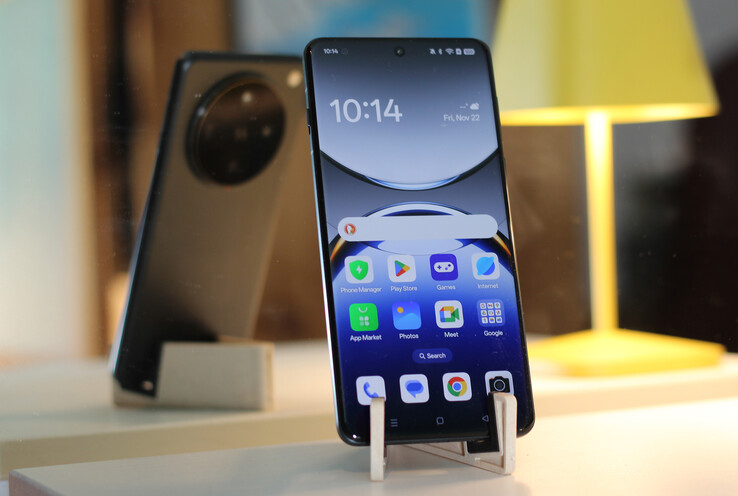
Oppo Find X8 Pro
- 11/26/2024 v8
Florian Schmitt
Transparency
The selection of devices to be reviewed is made by our editorial team. The test sample was provided to the author as a loan by the manufacturer or retailer for the purpose of this review. The lender had no influence on this review, nor did the manufacturer receive a copy of this review before publication. There was no obligation to publish this review. As an independent media company, Notebookcheck is not subjected to the authority of manufacturers, retailers or publishers.
This is how Notebookcheck is testing
Every year, Notebookcheck independently reviews hundreds of laptops and smartphones using standardized procedures to ensure that all results are comparable. We have continuously developed our test methods for around 20 years and set industry standards in the process. In our test labs, high-quality measuring equipment is utilized by experienced technicians and editors. These tests involve a multi-stage validation process. Our complex rating system is based on hundreds of well-founded measurements and benchmarks, which maintains objectivity. Further information on our test methods can be found here.








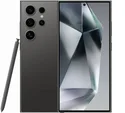
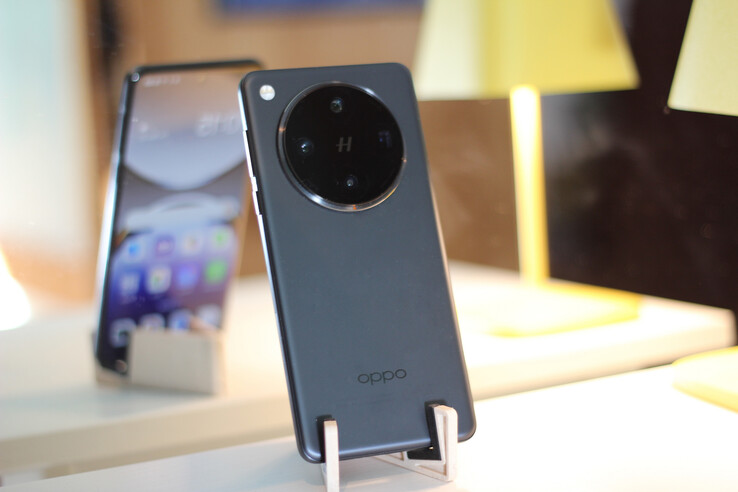







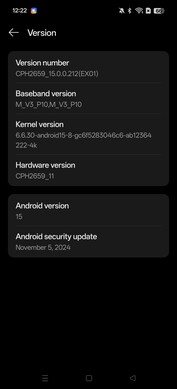
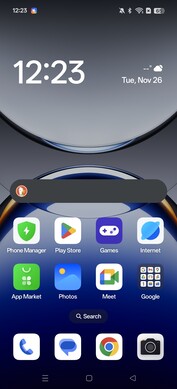
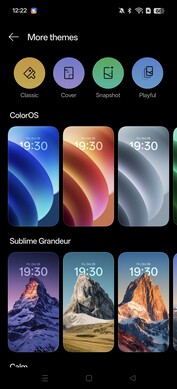
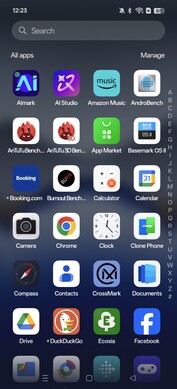
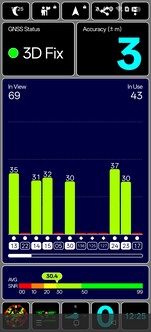


























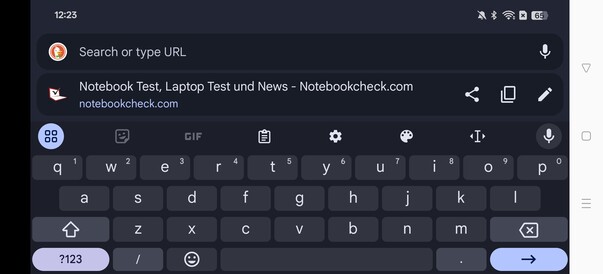
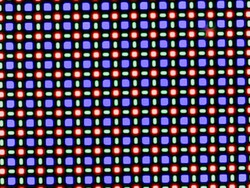
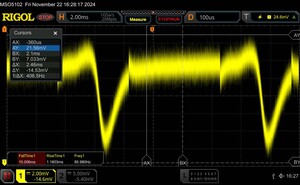





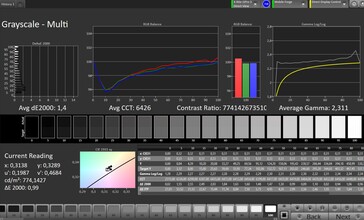
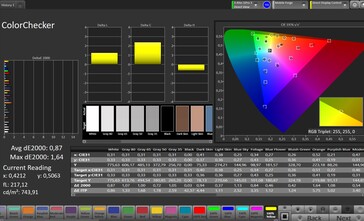
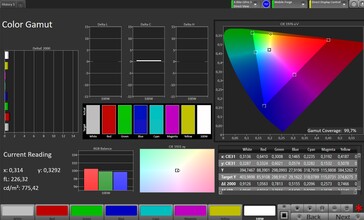
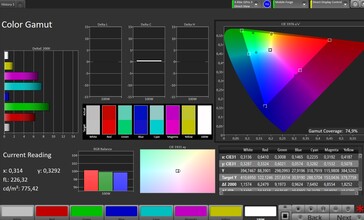
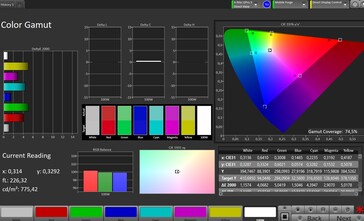
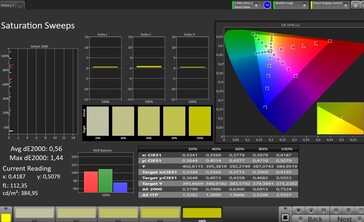
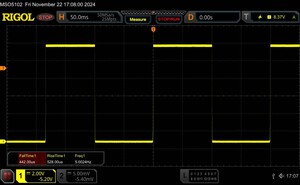
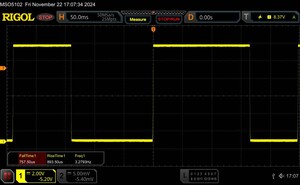




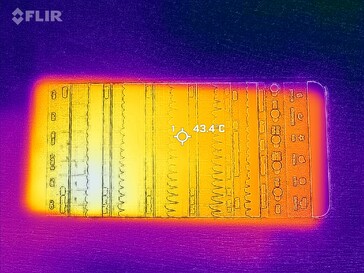
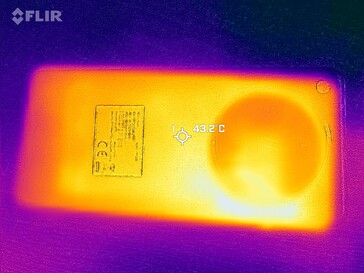
 Total Sustainability Score:
Total Sustainability Score: 
